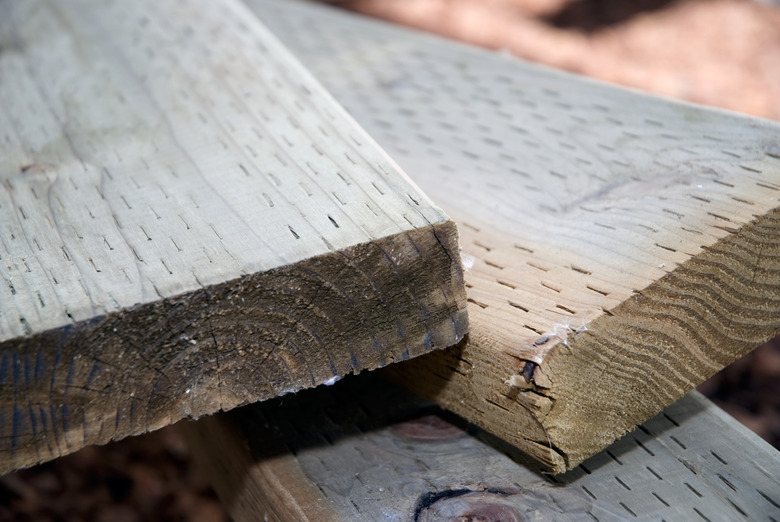How To Use Pressure Treated Wood Inside
If you want to use pressure treated wood indoors, the first question to ask is: "Why?" The purpose of pressure treating wood is to make it able to stand up to rot, fungus and insects, and these are all problems you normally encounter outside. Indoors, where wood is not subjected to extreme conditions, it's usually preferable to use untreated lumber. It's lighter compared to pressure treated lumber (which tends to be heavy), more attractive, and – the most important part – not treated with toxic chemicals.
However, there are situations in which it makes sense to use pressure treated wood indoors. You may be framing a wall in a basement or bathroom where moisture is a problem or perhaps you're constructing a shower bench. Because of the problem of toxicity, builders are divided on whether using pressure treated wood indoors is ever okay. However, that really depends on the chemicals used in the pressure treating process.
What's in That Wood?
What's in That Wood?
Pressure treated wood has been around since the 1940s. For many years, manufacturers produced it by infusing chromated copper arsenate (CCA) deep into the grain under pressure. This compound contains arsenic, so you definitely don't want it anywhere near the curious mouths and fingers of toddlers. However, the industry stopped using CCA, which gives the wood a deep-greenish color, in 2003. Today, the chemicals you find in pressure treated wood are generally more benign. They include ACQ (Alkaline Copper Quaternary), Sodium Borate (SBX) and Micronized Copper Quaternary (MCQ). These compounds also stain the wood but not as much as CCA did, and the color is usually closer to that of natural wood.
Is Pressure Treated Lumber Safe?
Is Pressure Treated Lumber Safe?
One leading manufacturer of pressure treated lumber assures consumers that lumber treated with borates or micronized copper is safe for indoors – as long as it is used in appropriate applications. These include pretty much any area except food surfaces, such as cutting boards and countertops, and places where pets are likely to chew it. If you use pressure treated lumber or plywood indoors to build a subfloor or a wall that is covered with drywall or tile, there is no health risk, and you'll get the protection against moisture and insects that pressure treated wood offers.
Using Pressure Treated Wood Indoors
Using Pressure Treated Wood Indoors
When shopping for pressure treated lumber for any project, it's a good idea to check the label affixed to the end of each board. It tells you which chemicals were used in the pressure treating process and the applications for which the lumber is rated. Lumber rated for ground contact generally contains the strongest chemicals and isn't a good choice for an indoor project. A better choice is pressure treated pine or fir decking or trim lumber. Never use recycled pressure treated lumber indoors. There's a good chance it was treated with CCA, which means it contains arsenic.
If you're going to leave the pressure treated wood exposed, perhaps as a post or an exposed rafter, plan on painting or finishing it. Pressure treated wood isn't attractive and giving it a protective coating not only makes it look better, but it also seals in the chemicals and adds another level of protection against pressure treated wood hazards.
